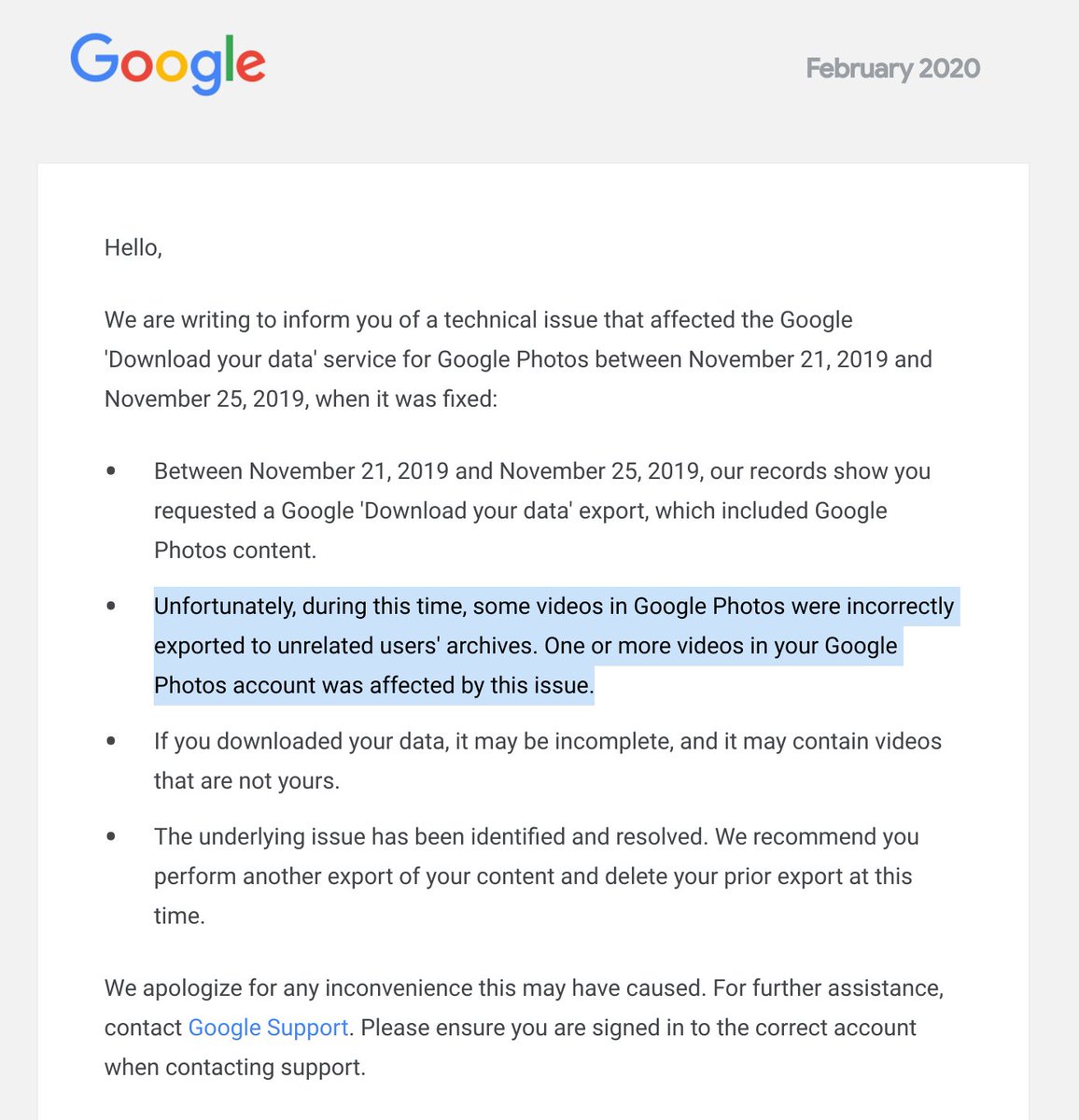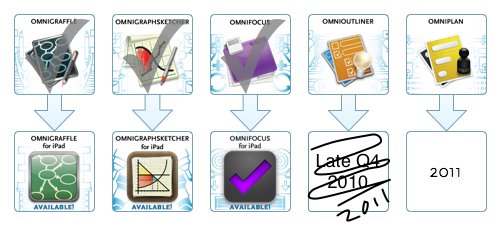In a previous post, I wrote about the big tech companies’ tin ear for public relations, and how that’s feeding mistrust of the whole industry (link). More than a year later, we’ve made little progress on public mistrust, and that’s feeding a legal and regulatory attack on the industry. Today I’ll talk about that attack, and why it should worry all of us, not just people who work in tech.
If you grew up in a democracy, you were probably taught that the rule of law is essential to a free society. It’s supposed to work like this:
- The law describes clearly what's illegal
- If you're accused of breaking the law, you'll be tried by an objective judge or jury who protect your rights
- If you're innocent you'll go free
- If you're guilty your punishment will be comparable to that of others who committed similar crimes
- The law can't be changed after the fact to make you guilty
None of those principles apply to the antitrust actions being proposed against the big tech companies. For those companies, actions that were previously legal are now being made illegal. This change is being made without the enactment of new laws, but rather by reinterpreting existing laws to give them dramatically different meanings. Many of the people accusing the tech companies are not objective; they are also the ones who will judge them. And the punishments are being made up as we go along.
Don’t get me wrong, I'm not here to excuse the actions of the big tech companies. As I’ve said before many of them have done things that are morally reckless, stupid, and bad for society. You may think they deserve to be punished. In some cases I agree.
But let's all be clear about what’s going on right now: The crusade against the tech companies is much more about emotion than rationality, and it’s eroding the rule of law that protects us all from arbitrary action by populists.
If this doesn’t scare you, it should.
Here's why:
Fun and games with the federal government
In my career, I've had a lot more involvement with competitive law than I wanted. Specifically, I had a front row seat to four cases:
- When Apple sued Microsoft for stealing parts of the Macintosh interface, I was working in Apple's competitive analysis team. I saw the runup to the suit, gave a deposition, had a lot of in-depth interaction with Apple's lawyers, and saw how the legal system worked.
- When I worked in the Visual PC group at Silicon Graphics, I saw firsthand how Microsoft and Intel manipulated their products and licensees to keep control over the PC market.
- While at Palm, our legal team had me travel to brief the Federal Trade Commission on what we believed were deceptive advertising practices by Microsoft. I saw up close how the government handled that case.
- Also while at Palm, I was subpoenaed to testify in the states’ antitrust suit against Microsoft. That involved many more trips to Washington that I wanted, a deeply unpleasant time in federal court, and another inside look at the system in action.
In all four cases, my side, the people and companies I thought were in the right, lost. My painful experiences being beaten up by big competitors ought to make me rabidly enthusiastic about the charges against today's tech titans. But I’m not, because there’s a double standard in play. The courts and government decided the behavior of the “Wintel” duopoly was generally legal, and those companies escaped serious punishment. I didn’t always agree with that outcome, but there was a logic to it, and it set out some fairly consistent rules for what tech companies could and could not do. Apple and Google and Amazon and even Facebook have generally followed those rules; their behavior wouldn’t have even gotten you charged in the 1990s, let alone punished. So why are we now talking about breaking them up?
How competitive law used to work. Traditionally, regulation of big companies has focused on one central principle: Are you hurting customers? If the answer was yes, the government would act aggressively against you, on the assumption that individual customers didn’t have the ability to defend themselves against a corporation. But if there was no customer harm – in particular, if prices weren’t being jacked up – the government left companies to duke it out in the market, with the idea that the public should be allowed to choose the winners and losers rather than a government bureaucrat. Here are a couple of examples of how it worked:
Example 1: Deceptive advertising. When I worked at Palm, Microsoft was late in focusing on mobile, and did a lot of misleading promotion for Windows CE (the mobile version of Windows). In particular, it made claims in ads that overstated its features outrageously. We were so mad about it that we complained to the Federal Trade Commission, which regulates advertising. The FTC asked us to give it a briefing. That seemed to go well, and we thought the government was going to protect the good guys (us) from unfair advertising by the beast in Redmond.
Imagine our surprise when, months later, the FTC accused both Palm and Microsoft of misleading advertising. Ads from both companies, we were told, had failed to disclose that if you bought a wireless device you'd need to pay for a service plan. We thought that was kind of obvious, but it was the early days of wireless data and the FTC said our ads might deceive customers. Palm and Microsoft were both forced to sign consent decrees, legal agreements with the government committing us to add text to every ad, for many years, saying that a service plan was required for wireless data.
It was a slap in the face for both companies, but we got the FTC's message: Don't come to us whining about your competitive problems; we're here to protect consumers. I was not happy at the time, but gradually I’ve come to respect the government’s behavior. Companies have lots of money and many different ways of defending themselves; they should not expect the government to do them favors. Individual consumers have much less power. So the priority is to protect consumers from predatory behavior by companies.
Example 2: Tying products together. At several places where I worked, one of our biggest complaints against Microsoft and Intel was that they manipulated the Windows-Intel standard to protect their other businesses. For example,
- Microsoft threatened to withhold its Basic programming software from Apple unless it licensed the Mac interface to Microsoft
- When Silicon Graphics tried to enter the personal computer market with a computer that had supercharged graphics, Intel withheld its latest processors from SGI until Intel’s own competing graphics accelerators reached the market
- When Palm had its most momentum in the market, Microsoft threatened and manipulated our ability to sync Palm handhelds with MS Office, in order to discourage IT managers from standardizing on us
I complained bitterly to our lawyers about this "tying" together of unrelated products. But I was told blandly, "the courts don't view tying as illegal unless you can show that it's increasing prices to consumers." Once again, the standard was not complete fairness between companies, but avoiding predatory behavior against consumers.
Today’s tech leaders are not breaking traditional competitive law
The big tech companies are being threatened with all sorts of new regulations and lawsuits, but by the standards of previous decades, it's almost impossible to make a case that they've broken the law.
Has Amazon's e-commerce business hurt consumers? It’s hard to find the damage. Amazon has almost certainly lowered prices and increased availability of goods, especially for people outside the big cities. Yes, it has taken money from a lot of other retailers, but there’s a long tradition of competitive change in retail. What’s happening in online commerce is just a continuation of a trend that’s been going on at least since the first mail-order catalogs took on general stores in the 1840s (
link). More recently, in the late 20th century Walmart devastated the shopping districts of small towns across America (
link), and nobody broke them up. On the contrary, Sam Walton (founder of Walmart) was a folk hero.
Has Google increased prices on anything? Considering that it gives away most of its software, it's really hard to make that argument. Even the things Google charges for are usually cheaper than the alternatives. For example, Android is incredibly less costly to license compared to Microsoft’s old OS pricing, and Google Docs is far more economical than traditional Microsoft Office was. Google has definitely hurt the advertising industry, and other tech companies, but remember that hasn't been illegal in the past unless it raised consumer prices.
What about Apple? They definitely charge a premium for their products. But nobody I know of is being coerced into buying an iPhone. There are very good, lower-priced alternatives in the market. People choose to buy the iPhone and Macintosh because they like the brand, because of peer pressure, and because they admire their design and features. Nothing about that is illegal. The App Store is definitely a monopoly, but having a monopoly isn’t illegal unless you use it to raise prices, and the way Apple manages the store has driven down app prices, not raised them. The one time Apple did conspire to raise prices, in ebooks, the feds slapped them down promptly (
link).
Meanwhile, Apple’s tight control over iOS applications has kept many viruses out of its phones. All those controls suck for software developers, and I don’t really like them, but they haven’t been predatory against consumers.
Then there’s Facebook. It’s an arrogant and reckless company that’s pathetic at public relations. But that’s not illegal, it’s just stupid. The time Facebook did break the law is when it failed to protect consumers’ privacy after promising to do so. For this it has paid huge fines and agreed to a consent decree that puts its privacy policies under an external monitor (
link). Good. To me, that showed the system was working – when Facebook broke the law, it was punished, and it’ll be punished a lot more severely if it does so again.
The real motivation behind the attack is emotion
There are many more charges against the big tech companies, and I don’t want to go through all of them here. But in my opinion, none of the situations would have, in the past, justified the extreme act of breaking up or deeply regulating a company. So the people who are advocating heavy regulation are trying to reinterpret the law.
There was an article about the process in the NY Times last year, headlined “To Take Down Big Tech, They First Need to Reinvent the Law” (
link). The article explains many of the arguments being made by the re-interpreters, and it makes the point that there’s a history of antitrust law evolving. (If you want to read a much more detailed article on that subject that covers both sides of the issue, check out the article
here).
But that’s not the most important part of the article. I think the key phrase in it is this one near the start:
“Big technology companies work on artificial intelligence that threatens to create a world where human beings are eternal losers.”
Think about that for a second. It’s an amazingly sweeping assertion. I know the reporter is trying to summarize the public mood, but the fact that the paper put it in a news article without any attribution or supporting evidence is shocking to me. Unfortunately, this is a common pattern in much of the recent coverage of the tech industry. At its heart, the campaign against the tech companies isn’t really about antitrust law, it’s about fear of the future and distrust of the people running tech. We’re making decisions emotionally, and then trying to rationalize them by cherry-picking the evidence.
The legal system (and the professional press) is supposed to protect us from this sort of hysteria. If you're reporting on an issue, you're supposed to cover it in a balanced way, and to fact-check every assumption. If you want to change the law, you’re supposed to propose a bill, debate it, pass it through Congress, and get the president to sign. It’s an intentionally complex process, designed to force us to pause, think about what’s happening, and listen to arguments on all sides of the issue.
Re-interpreting the law bypasses all of that process, and puts us at risk of creating new rules that do more harm than good. To give you a couple of examples:
- One proposal is to prohibit tech companies that have marketplaces, like Amazon, from selling their own branded goods. But if you make that a rule, what’s to stop it from eventually applying to Trader Joe’s, or to the discount house-branded products in every grocery and drug store in the country?
- Another proposal says tech companies should be prevented from buying startups that might threaten them. But if you cut off the possibility of selling a startup to a big company, you reduce the incentive for VCs to fund those startups. You could end up crippling the creation of startups rather than increasing it.
But my biggest concern is that if we give in to hysteria in this situation, what’s to stop us from doing it again and again, every time a group or an industry becomes unpopular?
Who’s to say the next reinterpretation of the law won’t be used against you?
In an age of general fear and populism, eroding the rule of law is the last thing we should be doing. If you really believe that tech needs to be reined in, write a bill and let’s debate it. That’s how democracy is supposed to work.
That’s my take on the legal situation; I welcome your comments, including disagreements. There’s also an underlying issue we should be discussing: Why have we all become so angry and afraid that we’re willing to sacrifice the law this way? Until we’ve dealt with that underlying situation, society will continue to be at risk from hysteria and the bad decisions it produces. I think the tech industry bears some of the blame for this mess, and also can help to help fix it. I’ll cover that next time.
Copyright 2013 Michael Mace.















 HMD Global has already sent out invites for MWC 2020. As expected the company is launching new smartphones at the event one of which has featured in leaks. Evan Blass has posted pictures of the new Nokia smartphone with the codename “Captain America.” Blass says that the image could be of the Nokia 5.2.
HMD Global has already sent out invites for MWC 2020. As expected the company is launching new smartphones at the event one of which has featured in leaks. Evan Blass has posted pictures of the new Nokia smartphone with the codename “Captain America.” Blass says that the image could be of the Nokia 5.2.



 Images: Daily Hive & Kbb.com
Images: Daily Hive & Kbb.com








